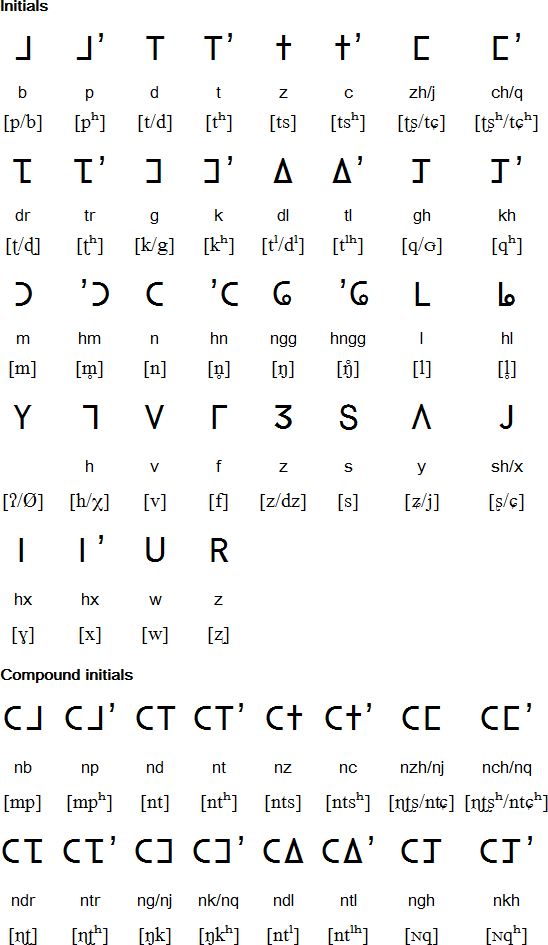Pollard Miao alphabet
Origin
The writing system known as Pollard Miao writing was devised in 1905
by Samuel Pollard, a British missionary, with help from Yang Yage and
Li Shitifan. Before Pollard came along, the A-Hmao language, when written at all,
was written with Chinese characters. Pollard Miao underwent many changes
and revisions and didn’t become stable until 1936, when a translation
of the New Testament was published in Pollard Miao writing.
The authorities in Beijing were not too keen on a writing system invented
by a foreign missionary and in 1957 they introduced an alternative
system based on Hànyŭ Pīnyīn.
This was not popular among the A-Hmao people, who were already familiar with
the Pollard system.
Various efforts have been made to improve Pollard Miao writing, which
inadequately represents the phonetics and tones of A-Hmao and is not
ideal for writing Chinese loan words. A semi-official ‘reformed’ Pollard
script has been in use since 1988, along with the older version of the
script, and the pīnyīn version.
Notable features
- Vowels (finals) are written in small letters around the consonants
(initials). The positioning of the vowels indicates the tone of a
syllable. An alternative system of tone indication is used in the
1988 version of the script.
Used to write
A-Hmao or Hwa Miao, a dialect
of Miao spoken in Yúnnán province
in the southwest of China. Outside China, Miao is known as Hmong
and is spoken in Vietnam, Laos, Thailand and the USA. The approximate
number of native speakers of Miao/Hmong is 5.5 million.
In Vietnam, Laos and Thailand, Hmong is written with either the
Pahawh Hmong script or the Latin alphabet.
Pollard Miao alphabet
Initials

Finals
![]()
Links
Songs and Stories and a Glossary of Phrases of the Hua Miao of
South West China (includes free font):
http://www.archives.ecs.soton.ac.uk/miao/
